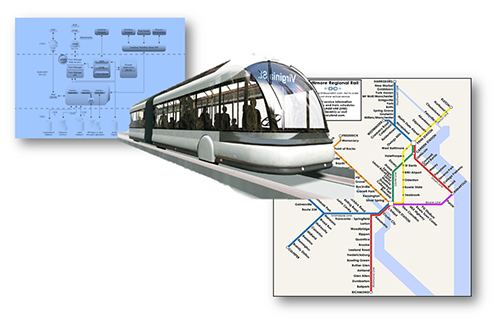
In any system design, redesign or improvement effort there are always three systems to consider. The first one is obvious- it is the one being designed or modified. The second is less obvious and is often given cursory treatment. That is the system in which the subject of the design/redesign will live. It is the environment or context for the primary system. The third is nearly always overlooked or acknowledged with less than intentional treatment. That system is the system with which we do our design work.
The first and most obvious system is the one that we are tasked to design, modify or improve. Everyone understands that the system is the focus of our work. We may have some difficulties at the outset defining the boundaries or getting the requirements for our work set out as clearly as possible, but we are nearly always aware of what we will call “the system of interest.”
The second system can be a little more problematic. This is the system where the problem exists and where our solution will reside. Although we are typically aware of the problem that we are trying to solve, we are not always fully aware of the context around that problem. This lack of awareness can come back to haunt us. Most often this takes the form of unintended consequences. Because we don’t fully understand the context system we can inadvertently set up what can turn out to be serious problems stemming from our proposed “solution.”
Consider the example of the nutria. The nutria is a large South American rodent about the size of a small to medium sized dog. It was discovered in the quest for a furbearing animal that would yield high-quality fur, the prolific and resistant to disease, flourish in any climate and eat a wide variety of inexpensive foodstuffs. The nutria fit the bill perfectly.
A mature female is capable of producing 20 young every year. It is inexpensive to feed and is not susceptible to most of the common diseases. It can live in almost any climate and, best of all, yields high-quality commercial grade pelts.
The nutria solution met the problem as defined almost perfectly. The real problem is that the solution was put in place without any consideration to how it might operate in the context system. The prolific rodent whose population was not limited by disease rapidly filled the allotted spaces. It escaped into the surrounding uncontrolled environment where it flourished, being able to thrive on the readily available plant life it encountered.
Capable of handling any environment, it was able to spread geographically in a relatively rapid fashion. It spread was not curtailed by climate or changing food sources. Prolific in the wild as in captivity its numbers grew and it quickly became a threat to the plant life in each new area it occupied. Originally introduced in East Texas and Louisiana it is now consuming the marsh lands on Maryland’s Eastern Shore.
We can cite numerous examples of other sets of unintended consequences. The roots of each one relate directly to a failure to adequately understand the context system into which the proposed solution was to be introduced. The failure to understand this, the second system of our three, comes at a price which can often be significant.
While some more forward thinking design efforts considered both the first and second systems it is the rare design indeed that gives any thought to the third. The design of any solution is always the product of a design system. What is rare is the intentional crafting of the design system.
Most often we fail to consider the system that we use to arrive at our solutions. Sometimes we consider individual processes within the system but even this is relatively rare. The cost here to a disjoint design system can be measured largely in lost opportunities. By not approaching our solution in a systematic way through deliberately chosen and related processes we are often in the position of missing design alternatives that would appear through a more systematic approach.
Our third, or design, system needs to be thought out in advance so that it will lead us through the careful consideration of our alternatives. This system needs to provide for divergent thinking as well as critical or convert to thinking in which are analytic training has steeped us. Once we have a good general design for our creative processes we must then reconsider them in the context of each new problem. Not only should our design system be generally sound but it should also be amenable to tailoring to fit the problem before us.
If we give due respect to each of the three systems, we can expect to see an increase in the efficiency and effectiveness of the solutions we produce. Failure to adequately treat any one of the three will exact a certain cost. We can avoid those costs and arrive at the best possible solutions by giving adequate consideration to each of the three systems in its own right.
NOTE: For a more complete treatment of these ideas I refer you to an excellent article by Dr. James N. Martin, The Seven Samurai of Systems Engineering: Dealing with the Complexity of 7 Interrelated Systems. Dr. Martin’s explication is more nuanced and expands the three systems into seven considering the impact of the solution on the context system as well as a variety of additional and helpful concepts. I think you will see that the principles remain the same. Regardless of our differences in approach, if Dr. Martin and I are successful in raising your awareness in this arena then our purposes will have been accomplished.





